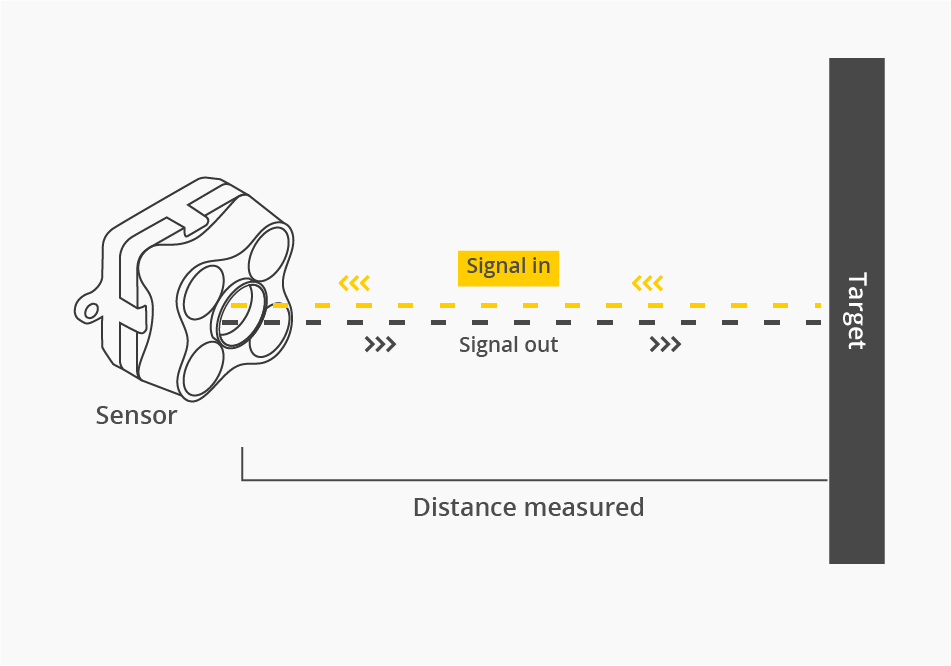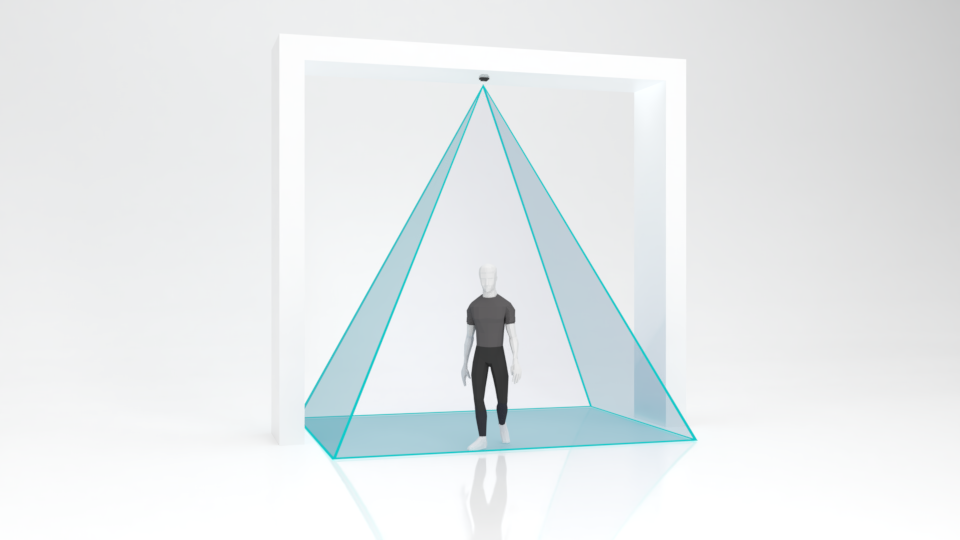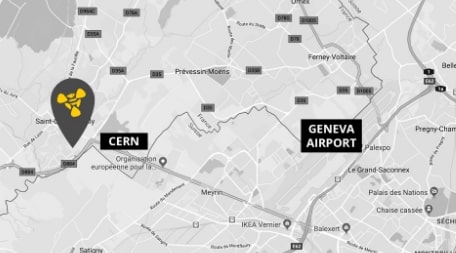Distance sensing is used to detect the proximity of objects without physically touching them. It is a fairly simple process that starts with the emission of a signal like an infrared (IR) beam of light. In this example, the beam will reflect off the surface of an obstacle in its path and return to the sensor. Various properties can be determined by analyzing changes in the return signal, but proximity is typically measured as a function of time.
Although simple at a fundamental level, the principles of distance sensing rapidly become more complex when factoring in different technologies with dissimilar signal types. These break down further when it comes to key parameters like sample rate, range, and resolution.
Although simple at a fundamental level, the principles of distance sensing rapidly become more complex when factoring in different technologies with dissimilar signal types. These break down further when it comes to key parameters like sample rate, range, and resolution.

Key Distance Sensing Technologies
The three most common signal types in distance sensing technologies are IR beams of light, lasers, and ultrasonic waves. Each of these has distinct benefits and drawbacks. LEDs, for instance, offer a broad range of benefits when it comes to precise long-range sensing of various interface materials with quick refresh rates. Yet these parameters are typically underpinned by a high current draw.
These operating properties are also dependent on how the signal technology is implemented into a distance sensing product. Infrared beams are routinely used for both triangulation and LED time-of-flight (ToF), but triangulation is a short-range solution while LED ToF sensors can be used for distance sensing with a detection range of up to 60 meters.
A similar dichotomy exists when it comes to distance sensing with other types of beams, like lasers. Lidar (light detection and ranging) technology offers one of the highest maximum range capabilities of any distance sensing technology, alongside robust versatility; it can be based on many different beam formats. However, laser-based lidar technology offers inferior resolution to an alternative tool known as VCSEL (vertical-cavity surface-emitting laser). VCSEL offers extremely fine resolutions with a very short operating range.
Given the range of considerations that must be made when it comes to selecting an appropriate distance sensing technology, it makes sense to start with your application. The applications for distance sensors are growing increasingly diverse. Fortunately, each area has specific needs that cannot be serviced by each technology equally.
These operating properties are also dependent on how the signal technology is implemented into a distance sensing product. Infrared beams are routinely used for both triangulation and LED time-of-flight (ToF), but triangulation is a short-range solution while LED ToF sensors can be used for distance sensing with a detection range of up to 60 meters.
A similar dichotomy exists when it comes to distance sensing with other types of beams, like lasers. Lidar (light detection and ranging) technology offers one of the highest maximum range capabilities of any distance sensing technology, alongside robust versatility; it can be based on many different beam formats. However, laser-based lidar technology offers inferior resolution to an alternative tool known as VCSEL (vertical-cavity surface-emitting laser). VCSEL offers extremely fine resolutions with a very short operating range.
Given the range of considerations that must be made when it comes to selecting an appropriate distance sensing technology, it makes sense to start with your application. The applications for distance sensors are growing increasingly diverse. Fortunately, each area has specific needs that cannot be serviced by each technology equally.
Car Parking Assistance
Ultrasonic sensors are often used for parking assistance due to their broad range of interface options and low signal interference from ambient light.

Drone Technologies
Drones have entered both the consumer and industrial spaces in a massive way in recent years, with LED and lidar technologies playing a key part in the performance of unmanned aerial vehicles (UAVs). These offer the range and resolution required to ensure optimal positioning, collision avoidance, and intelligent tracking for more demanding applications.
Mobile Robotics
Autonomous and guided robots that can move around a physical space use distance sensors to identify and navigate their surroundings. Advanced proximity sensors help robots maneuver through cluttered and changing environments with ease.


People Counting & Digital Stock Monitoring
Alongside range and sampling rates, eye safety is a key parameter in people counting applications. LEDs with signal wavelengths in the infrared spectrum provide appropriate illumination and performance for rapid people counting in both indoor and outdoor applications. Likewise, LED ToF can be used to transform analog stock levels into actionable digital data.
Distance Sensing with Terabee
Terabee is a rapidly growing international organization that specializes in advanced sensing and electronics technologies. We recently prepared a brief guide on choosing the right distance sensor for your application. Feel free to read through the article below:
If you have any questions about our distance sensing capabilities and products, please feel free to contact a member of the Terabee team using the links below.










